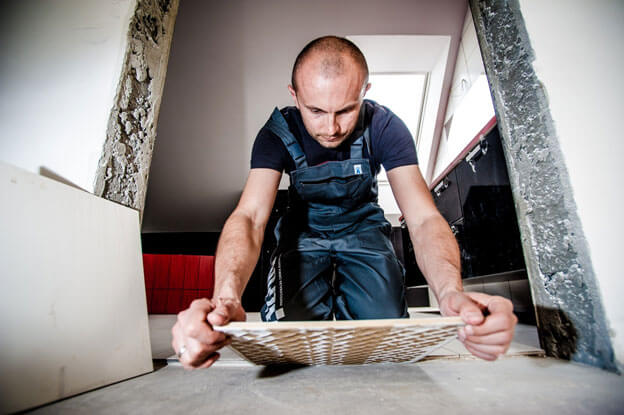
Tiles are valued by the American Society for Testing and Products to endure daily circumstances of usage. Such aspects decide the health and approved usage of the tile. In addition to these measures, tiles are often evaluated for overall consistency. When selecting ceramic tiles, it is necessary to compare all ratings to get the best tile for your application.
Tile Grading
Tiles are classified, especially ceramic tiles, using a binary grading scheme based on their thickness and consistency. A ranking of 1 is the best quality and thickest tile usable, 3/4-inch thick, so you can use it everywhere.
Grade 2 reflects the existence of some imperfections, but the tile is still usable on walls or floors. Such tiles are around 1/2-inch wide. Grade 3 tiles are the thinnest, 1/4-inch wide, and are appropriate for wall usage only. Grades 1 through 3 is sometimes referred to as standard, secondary, or grade.
Wear Rating and Scratch Resistance
The Porcelain Enamel Institute assesses the tiles’ capacity to withstand abrasions induced by normal wear and tear. The bigger the Roman numeral next to “P.E.I.” in the written ranking, the higher the resistance.
Tiles graded I or II are not appropriate for floor installation. Floor tiles must be ranked III or higher for domestic use; the lowest level, IV, is required for high-traffic business floors. Classification refers only to glazed tiles.
Glazed and unglazed tiles are tested for scratch resistance and toughness by the Mohs scratch check. Tiles are ranked from soft 1, or Talc, to 10, or Diamond, the most robust possible tiles.
A random selection of tiles is scratched with special test tools, each with different mineral hardness until the surface has a scratch mark. A ranking of 5 or higher is suggested for home flooring and 7 or higher for commercial flooring.
Water Absorption and Frost
The tile’s water absorption rating lets you decide whether the flooring is appropriate for installation in your house. The ranking is determined based on how much water the pipe consumes in addition to its weight.
For starters, tiles labeled as non-vitreous do not withstand a high-moisture atmosphere such as a shower as they lose more than 7% of their weight.
In the case of damp environments, like outdoor patios, the tiles must be vitreous or impervious. The procedure is done by exposing the tile to painted, standing water for 16 hours, and then testing for penetration.
In conjunction with the water absorption value, the tiles are tested for tolerance to frost. Vitreous and impervious tiles are immune to freezing as they do not contain enough water to freeze and break the surface.
About the absorption of snow, frost resistance is not classified as a rating. If a frost-resistant mark is present, the tile would not be harmed by freezing or de-icing. This icon is not valid if you are intending to use the tiles indoors.
Coefficient of Friction
The C.O.F. ranking represents the force needed for an entity to travel over the tile surface separated by the tile weight. The primary consideration for this ranking is whether a person walking on the tile is at risk of falling due to a lack of friction.
The level must be above 50 foot-pounds for residential structures. It will be above 60 for industrial buildings under the American Disabilities Act. The amounts are listed first in the foot-pounds, followed by the S.I. Parenthesis units on the details sheet of the panel.
These are some of the items you should search on the web to find out:
- Both ceramic tiles must be of the same color and texture. The trends and trends that differ, as defined.
- The outline of each tile will be square or rectangular with straight edges and standard thickness.
- The surface coat and glazing will be flawless and clear of gaps, flaws, and scratches.
- You may even scrape the surface of a ceramic tile to guarantee that it is of high quality.
- Watch out for broken corners and rough surfaces. The easiest way to test the consistency of ceramic tiles is to position them on a leveled board. If the tiles have a curvature or are bent, they are not going to lay flat.
- Measure the ceramic tile diagonals. They are supposed to be precisely the same length.
- Ceramic tiles are usually 5 mm wide. When they are smaller, they may crack quickly, depending on the application.
- Immerse the ceramic tiles in water for a day. Their water intake does not reach 10% of their dry weight.
- Using a standard cleaning agent used in homes to test the consistency of the glazing on the tiles.









